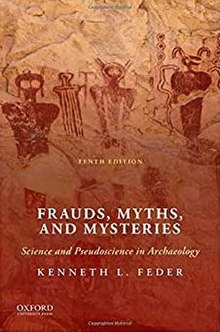Zecharia Sitchin was an author of a number of books proposing an explanation for human origins involving ancient astronauts. Sitchin attributed the creation of the ancient Sumerian culture to the Anunnaki, which he stated was a race of extraterrestrials from a planet beyond Neptune called Nibiru. He asserted that Sumerian mythology suggests that this hypothetical planet of Nibiru is in an elongated, 3,600-year-long elliptical orbit around the Sun. Sitchin's books have sold millions of copies worldwide and have been translated into more than 25 languages.

Pseudohistory is a form of pseudoscholarship that attempts to distort or misrepresent the historical record, often by employing methods resembling those used in scholarly historical research. The related term cryptohistory is applied to pseudohistory derived from the superstitions intrinsic to occultism. Pseudohistory is related to pseudoscience and pseudoarchaeology, and usage of the terms may occasionally overlap. Although pseudohistory comes in many forms, scholars have identified many features that tend to be common in pseudohistorical works; one example is that the use of pseudohistory is almost always motivated by a contemporary political, religious, or personal agenda. Pseudohistory also frequently presents sensational claims or a big lie about historical facts which would require unwarranted revision of the historical record.
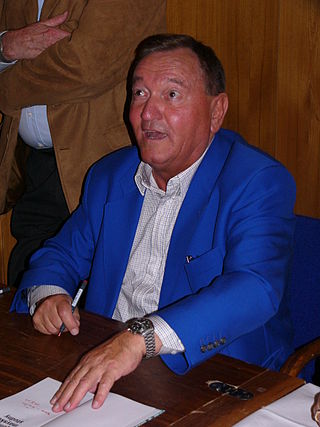
Erich Anton Paul von Däniken is a Swiss author of several books which make claims about extraterrestrial influences on early human culture, including the best-selling Chariots of the Gods?, published in 1968. Von Däniken is one of the main figures responsible for popularizing the "paleo-contact" and ancient astronauts hypotheses.
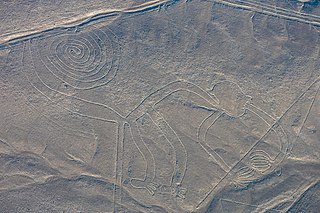
The Nazca Lines are a group of geoglyphs made in the soil of the Nazca Desert in southern Peru. They were created between 500 BC and 500 AD by people making depressions or shallow incisions in the desert floor, removing pebbles and leaving different-colored dirt exposed. There are two major phases of the Nazca lines, Paracas phase, from 400 to 200 BC, and Nazca phase, from 200 BC to 500 AD. In the years leading up to 2020, between 80 and 100 new figures had been found with the use of drones, and archaeologists believe that there are more to be found.

America's Stonehenge is a privately owned tourist attraction and archaeological site consisting of a number of large rocks and stone structures scattered around roughly 30 acres within the town of Salem, New Hampshire, in the United States. It is open to the public for a fee as part of a recreational area which includes snowshoe trails and an alpaca farm.
Pseudoarchaeology—also known as alternative archaeology, fringe archaeology, fantastic archaeology, cult archaeology, and spooky archaeology—is the interpretation of the past by people who are not professional archaeologists and who reject or ignore the accepted data gathering and analytical methods of the discipline. These pseudoscientific interpretations involve the use of artifacts, sites or materials to construct scientifically insubstantial theories to strengthen the pseudoarchaeologists' claims. Methods include exaggeration of evidence, dramatic or romanticized conclusions, use of fallacious arguments, and fabrication of evidence.

Ancient astronauts refer to a pseudoscientific set of beliefs which holds that intelligent extraterrestrial beings visited Earth and made contact with humans in antiquity and prehistoric times. Proponents suggest that this contact influenced the development of modern cultures, technologies, religions, and human biology. A common position is that deities from most, if not all, religions are extraterrestrial in origin, and that advanced technologies brought to Earth by ancient astronauts were interpreted as evidence of divine status by early humans.

Chariots of the Gods? Unsolved Mysteries of the Past is a book written in 1968 by Erich von Däniken and translated from the original German by Michael Heron. It involves the hypothesis that the technologies and religions of many ancient civilizations were given to them by ancient astronauts who were welcomed as gods.

Graham Bruce Hancock is a British writer who promotes pseudoscientific theories involving ancient civilizations and hypothetical lost lands. Hancock speculates that an advanced ice age civilization was destroyed in a cataclysm, but that its survivors passed on their knowledge to hunter-gatherers, giving rise to the earliest known civilizations of ancient Egypt, Mesopotamia, and Mesoamerica.
Xenoarchaeology, a branch of xenology dealing with extraterrestrial cultures, is a hypothetical form of archaeology that exists mainly in works of science fiction. The field is concerned with the study of the material remains to reconstruct and interpret past life-ways of alien civilizations. Xenoarchaeology is not currently practiced by mainstream archaeologists due to the current lack of any material for the discipline to study.

The Ica stones are a collection of andesite stones from the Ica Province in Peru, known for their engraved motifs. Largely regarded to be modern hoaxes, the stones in some cases utilize art styles from various pre-Columbian Peruvian civilizations and often depict anachronistic scenes or objects, including dinosaurs and advanced technology.

Fingerprints of the Gods: The Evidence of Earth's Lost Civilization is a 1995 pseudoarcheology book by British writer Graham Hancock, which contends that an advanced civilization existed in prehistory, one which served as the common progenitor civilization to all subsequent known ancient historical ones. The author proposes that sometime around the end of the last ice age this civilization ended in cataclysm, but passed on to its inheritors profound knowledge of such things as astronomy, architecture and mathematics.
The Hall of Records is a purported ancient library that is claimed to exist underground near the Great Sphinx of Giza in Egypt. The concept originated with claims made by Edgar Cayce, an American who claimed to be clairvoyant. He said in the 1930s that the civilization of Atlantis was destroyed around 10,500 BC and that Atlantean refugees built the Hall of Records at Giza to preserve their knowledge. Cayce's assertions had many precursors, particularly the pseudoscientific theories about Atlantis that Ignatius Donnelly promulgated in the late 19th century and claims about hidden chambers under the Sphinx that were made by H. C. Randall-Stevens and Harvey Spencer Lewis in the years before Cayce described the Hall of Records.
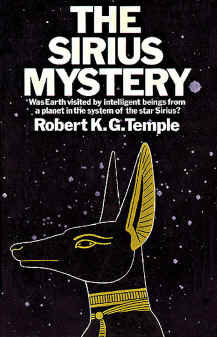
The Sirius Mystery is a book written by Robert K. G. Temple supporting the pseudoscientific ancient astronauts hypothesis that intelligent extraterrestrial beings visited the Earth and made contact with humans in antiquity and prehistoric times. The book was first published by St. Martin's Press in 1976. Its second, 1998, edition is called The Sirius Mystery: New Scientific Evidence of Alien Contact 5,000 Years Ago.
The Bat Creek inscription is an inscribed stone tablet found by John W. Emmert on February 14, 1889. Emmert claimed to have found the tablet in Tipton Mound 3 during an excavation of Hopewell mounds in Loudon County, Tennessee. This excavation was part of a larger series of excavations that aimed to clarify the controversy regarding who is responsible for building the various mounds found in the Eastern United States.
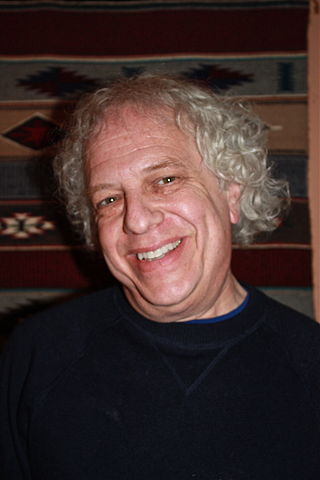
Kenneth L. "Kenny" Feder is a professor of archaeology at Central Connecticut State University and the author of several books on archaeology and criticism of pseudoarchaeology such as Frauds, Myths, and Mysteries: Science and Pseudoscience in Archaeology. His book Encyclopedia of Dubious Archaeology: From Atlantis to the Walam Olum was published in 2010. His book Ancient America: Fifty Archaeological Sites to See for Yourself was published in 2017. He is the founder and director of the Farmington River Archaeological Project.

Ancient Aliens is an American television series produced by Prometheus Entertainment that explores the pseudoscientific hypothesis of ancient astronauts in a non-critical, documentary format. Episodes also explore related pseudoscientific and pseudohistoric topics, such as: Atlantis and other lost ancient civilizations, extraterrestrial contact and ufology, and popular conspiracy theories. The series, which has aired on History since 2010, has been a target for criticism of History's channel drift, as well as criticism for promoting unorthodox or unproven hypotheses as fact. According to Smithsonian, episodes of the series overwhelm the viewer with "fictions and distortions" by using a Gish gallop.

Ancient astronauts have been addressed frequently in science fiction and horror fiction. Occurrences in the genres include:
Stephen Williams was an archaeologist at Harvard University who held the title of Peabody Professor of North American Archaeology and Ethnography.
Jeffrey Goodman is an independent American archaeologist with training in geology and archaeology. His early career was in oil exploration.
